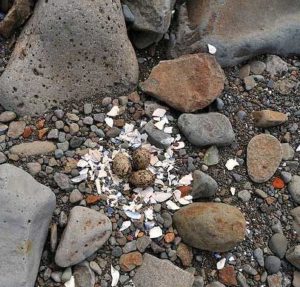Nested Interest
While many are celebrating Valentine’s day this month, birds are looking for mates for the upcoming breeding season. In Southern California, the breeding season lasts from the end of February to the middle of July, and Crystal Cove is a place where these avian couples find sanctuary.
 Perhaps the most important of Crystal Cove’s breeders are the California gnatcatchers. These shrubland birds are federally listed as a threatened species, due to the loss of native Southern California habitat. They form monogamous pairs, remaining together in the same territory throughout the year, although it is not known whether this relationship extends beyond a year. When the breeding season arrives, couples work together to build a nest, and once the eggs are laid, females spend more time in the nest, while males establish and defend their breeding territory. Under ideal conditions one pair can produce two broods of up to six eggs each year.
Perhaps the most important of Crystal Cove’s breeders are the California gnatcatchers. These shrubland birds are federally listed as a threatened species, due to the loss of native Southern California habitat. They form monogamous pairs, remaining together in the same territory throughout the year, although it is not known whether this relationship extends beyond a year. When the breeding season arrives, couples work together to build a nest, and once the eggs are laid, females spend more time in the nest, while males establish and defend their breeding territory. Under ideal conditions one pair can produce two broods of up to six eggs each year.
Some birds at Crystal Cove don’t build traditional nests at all. The black oystercatcher nests on the rocky shoreline, using pebbles and shells to create a home. These birds are monogamous and extremely territorial, often defending the same area for many years in a row. A typical pair will lay two to three eggs each year.
Due to its diverse habitat, Crystal Cove is a haven for a variety of breeding birds. The California gnatcatcher and black oystercatcher are just two examples of the wonderful diversity provided for our feathered friends.
Along with roses and candies, take your significant other on a hike through Crystal Cove and enjoy the landscape our birds experience daily. However, if you happen to spot a nest, please remember to observe from a distance, and let the new families celebrate their Valentine’s day in peace.
Photo by: Sandrine Biziaux
